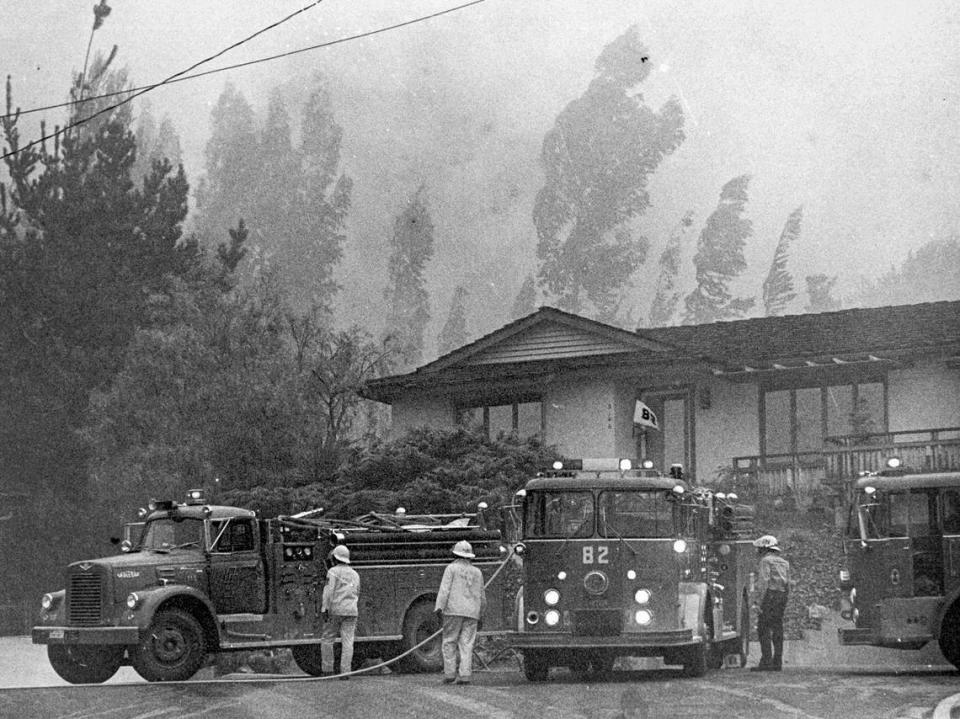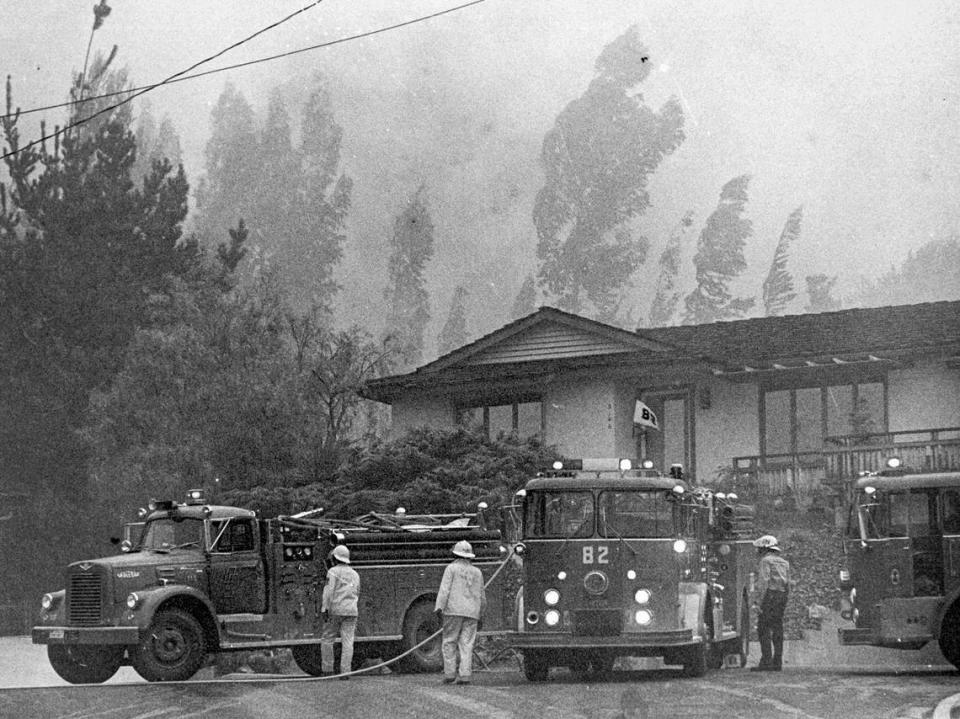Recently fires in Southern California have brought hundreds of crackpots onto social media trying to leverage tragedy.
Perhaps now is a good time to go back to basics.
Firefighters often talk about the fire triangle: fuel, heat and oxygen. Interrupt any of the sides of the triangle and they have a chance to win the battle.
In recent years an addition to the center of the triangle is a chemical chain reaction like a failed lithium ion battery — a concern at battery storage facilities like the Moss Landing Power Plant in Monterey County, which erupted in flames Thursday night and prompted evacuation orders for nearby residents.
Advertisement
Advertisement
Unfortunately the hillsides of California have all three legs of the triangle in abundance.
As time goes by, areas that burned grow back and burn again, but given California real estate pushes further into wildlands every year, it makes the fight more complex.
Technology, like air tankers, bulldozers and fire engines with pumps have given firefighters powerful tools, but if one of the legs of the triangle grow too long, even firefighters can’t stop the flame front.
For example when winds exceed the freeway speed limit, they loft embers far ahead of the fire front.
If an area hasn’t burned in a few decades the chaparral can build up decadent fuels to explosive levels.
Advertisement
Advertisement
And hot weather with low humidity is the bane of any firefight.
In San Luis Obispo County, one name gets repeated often when talking about tricky local fires: Las Pilitas. That could of course be because there have been a handful of major local fires under that name.
Robert Lewin, a former Cal Fire SLO fire chief, and current principal at Resolute Associates said in an email to The Tribune that there have been three fires with the Las Pilitas name.
The 1921 Las Pilitas fire charred 100,000 acres.

Smoke and high winds faced firefighters in the Flora Street neighborhood of San Luis Obispo during the height of the fire July 8, 1985. Las Pilitas Fire began July 1, 1985. The nine-day fire consumed 75,000 acres of brush, 10 homes, cost $6.3 million and jumped fire lines twice.
The 1985 Las Pilitas Fire burned 75,000 acres and destroyed 10 homes. It started on Las Pilitas Road near Santa Margarita and burned into coastal mountains behind Arroyo Grande and up to San Luis Obispo.
Advertisement
Advertisement
More in U.S.
However the most tragic of the three was the 1950 Las Pilitas fire.
That fire burned 27,800 acres and was halted when a freak July 10 rain of 0.48 inches quenched the last flames.
But before that happened, four men fighting the fire had been killed in one of the most deadly days for county fire services. The Spanish Ranch Fire of 1979 near Highway 166 also claimed the lives of four firefighters.
Early on July 5, 1950, the fire raged across a 7-mile front in terrain so steep bulldozers weren’t able to reach it.
The county was experiencing the sixth consecutive below-normal rain season with a 2.5-inch deficit recorded at Cal Poly.
Advertisement
Advertisement
But the lead headline was the tragedy reported by Telegram-Tribune on Thursday, July 6, 1950:

Front page of the Telegram-Tribune from July 6, 1950 carries news of the Korean War and the lead headline was the four firfighter deaths at Las Pilitas fire.
4 men burn to death in raging forest fire: 3 soldiers, 1 civilian trapped
Four firefighters were burned to death late yesterday afternoon when they were trapped in a pocket as two columns of flame converged in the Las Pilitas fire, about 20 miles northeast of San Luis Obispo.
The charred bodies were brought to the Palmer-Waters mortuary in San Luis Obispo last night, where only one man has been identified. He was Gerald O’Reilly, Tuolumne, a state division of forestry worker.
Badly Burned
The other three men have been identified by their combat boots as soldiers from Fort Ord, and they were members of the 4th infantry division stationed there. Their bodies were burned beyond recognition.
Advertisement
Advertisement
Positive identification is being determined by army authorities.
They were sent to the fire with 200 other soldiers, and who are now scattered over a wide area along the fire lines, hampering an immediate accounting of all the men to learn identity of those who died.
(A later story identified two of the men as Pvt. John P. Smith of Abbottstown, Pennsylvania, and Pfc. Laurence R. Morris of Toledo, Ohio, and the third remained unidentified. His name is listed in a Facebook post as Pfc. Turley McFarland.)

Front page of the Telegram-Tribune from July 7, 1950 carries news of the Korean War and aerial pictures of the Las Pilitas fire which killed four firefighters. The photos were by commercial photographer McLain.
Explosive Force
It was explained that the four men were part of a group of 20 men engaged in an area between the main fire and a separate fire when the two came together with “explosive” force.
Advertisement
Advertisement
The other men escaped to safety.
They were trapped near the old state relief camp, off the Calf canyon road, the local state forestry office reported.
Maj. Gen. Robert T. Fredrick, commanding general of the 4th division, rushed here last night from Fort Ord to personally investigate the deaths.
EMEA Tribune is not involved in this news article, it is taken from our partners and or from the News Agencies. Copyright and Credit go to the News Agencies, email news@emeatribune.com Follow our WhatsApp verified Channel




